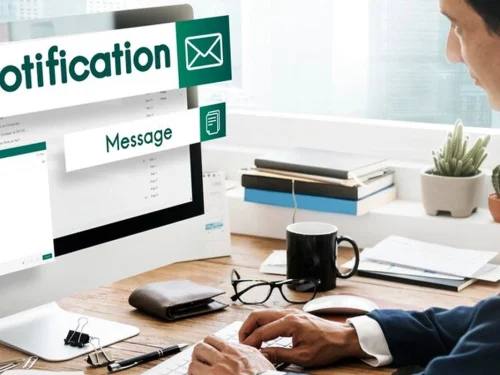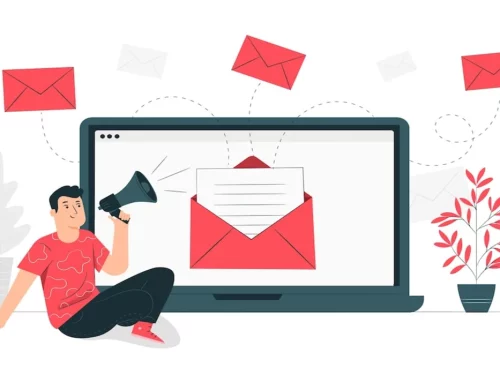
In today’s highly competitive healthcare landscape, building strong relationships with patients and prospects is no longer optional—it’s essential. Email marketing has emerged as one of the most effective tools for nurturing leads and improving patient retention in the healthcare industry. With the right strategy, it enables personalized communication, builds trust, and ensures ongoing engagement with your audience. Whether you’re a private practice, hospital, or healthcare network, email marketing is the cornerstone of long-term patient relationships.This article covers the best practices for email marketing in healthcare, including compliance requirements, strategies for segmentation, optimizing campaigns, and tracking performance to measure success.
1. Understanding the Importance of Email Marketing in Healthcare
Healthcare is a service-driven industry that thrives on trust, empathy, and ongoing relationships. Email marketing allows providers to consistently engage with patients by delivering relevant, timely, and personalized content directly to their inboxes. Unlike social media or search engines, email provides a direct line of communication that’s easy to personalize and track. From appointment reminders and wellness tips to updates on new services, email helps keep patients informed and engaged throughout their care journey. More importantly, it allows healthcare organizations to guide leads through the funnel—transforming first-time inquiries into loyal, returning patients. If you’re a healthcare provider looking for expert digital strategies, check out how we support healthcare providers with digital marketing solutions.
2. Navigating Compliance and Ensuring Patient Privacy
One of the most critical aspects of healthcare email marketing is compliance. HIPAA regulations require healthcare marketers to protect personal health information (PHI), making privacy and security non-negotiable. It’s essential to use HIPAA-compliant email platforms and ensure that all communications respect patient confidentiality. This includes obtaining proper consent before sending emails and implementing secure data storage and encryption methods. For audiences in the USA, compliance also extends to the CAN-SPAM Act, which governs opt-in practices and unsubscribe options. Respecting privacy isn’t just a legal requirement—it also builds trust with your audience.
3. Developing and Segmenting a Targeted Email List
Success in healthcare email marketing starts with your list. A well-segmented email list allows you to deliver the right message to the right person at the right time. You can segment by demographics, treatment history, engagement level, or specific health interests. For example, patients managing chronic conditions like diabetes may benefit from regular health tips and product updates, while new patients may need onboarding emails that introduce your practice and services. Avoid buying lists—instead, use website signups, patient portals, and appointment forms to grow your email database organically. Always prioritize quality over quantity.
4. Crafting Effective and Engaging Email Campaigns
When it comes to content, clarity and relevance are key. Your healthcare email campaigns should be concise, informative, and action-oriented. Use compelling subject lines to improve open rates and structure emails with clear headings, bullet points, and calls to action. Educational content such as health tips, seasonal wellness advice, and treatment guides not only engages your audience but also positions your brand as a trusted source of knowledge. Avoid medical jargon and keep the tone empathetic, professional, and easy to understand. Visuals, infographics, and video links can also boost engagement. If you’re looking for a partner to handle all aspects of your email campaigns, explore our services as a full-service email marketing agency.
5. Personalizing Messaging with a Patient-Centric Approach
In the age of personalization, one-size-fits-all messaging just doesn’t work. Healthcare consumers want content that feels relevant to their individual needs and situations. Use dynamic content and personalized fields to tailor messages by name, appointment history, or previous interactions. For example, a follow-up email after a check-up or a birthday greeting with wellness tips adds a personal touch that enhances patient loyalty. Personalization fosters a deeper emotional connection and increases the chances of repeat visits, referrals, and long-term retention.
6. Key Strategies and Best Practices for Healthcare Email Marketing
To maximize results, your strategy must go beyond just sending emails. Start by setting clear goals for each campaign—whether it’s driving bookings, increasing portal signups, or educating patients. Maintain a regular email schedule, but avoid over-sending which can lead to unsubscribes. A/B test subject lines, layouts, and calls-to-action to learn what resonates best with your audience. Make sure every email is mobile-optimized, as a significant portion of users will read them on smartphones. Also, integrate your email marketing with CRM and EHR systems to ensure seamless, data-driven communication.
7. Tracking Results and Enhancing Campaign Performance
Email marketing isn’t a set-it-and-forget-it strategy. Tracking key performance metrics such as open rates, click-through rates, conversions, and unsubscribe rates is vital to refining your campaigns. Use insights to understand what content your audience finds valuable and where drop-offs occur. If you notice low engagement, revisit your subject lines, email timing, or segmentation criteria. Analytics tools within most email platforms provide detailed reports that help you iterate and improve over time. The more you test and adapt, the better your results will be.
Also Read: How to Implement SEO for eCommerce Website: A Step-by-Step Approach
Conclusion
In a world where patients have more choices than ever, staying connected through email marketing gives healthcare providers a powerful edge. It not only helps nurture leads but also deepens patient relationships, boosts retention, and builds long-term loyalty. By embracing a strategic, compliant, and personalized approach to email marketing, healthcare organizations can transform the way they engage with their audiences—delivering real value with every message.
Frequently Asked Questions (FAQs)
1. Is email marketing HIPAA-compliant?
Yes, as long as you use a HIPAA-compliant email service provider and follow strict privacy practices, including obtaining patient consent and securing PHI.
2. How often should healthcare providers send emails?
A consistent but non-intrusive schedule works best—typically 1–4 emails per month depending on your audience’s preferences and the type of content you offer.
3. What types of emails perform best in healthcare marketing?
Educational content, appointment reminders, wellness tips, follow-ups, and personalized health advice tend to generate the most engagement.
4. Can small clinics or practices benefit from email marketing?
Absolutely. Email marketing is cost-effective and scalable, making it ideal for both small practices and large healthcare networks.
5. What’s the best way to build a quality email list?
Focus on organic methods like website sign-ups, patient intake forms, and health seminar registrations. Always get explicit opt-in consent.




